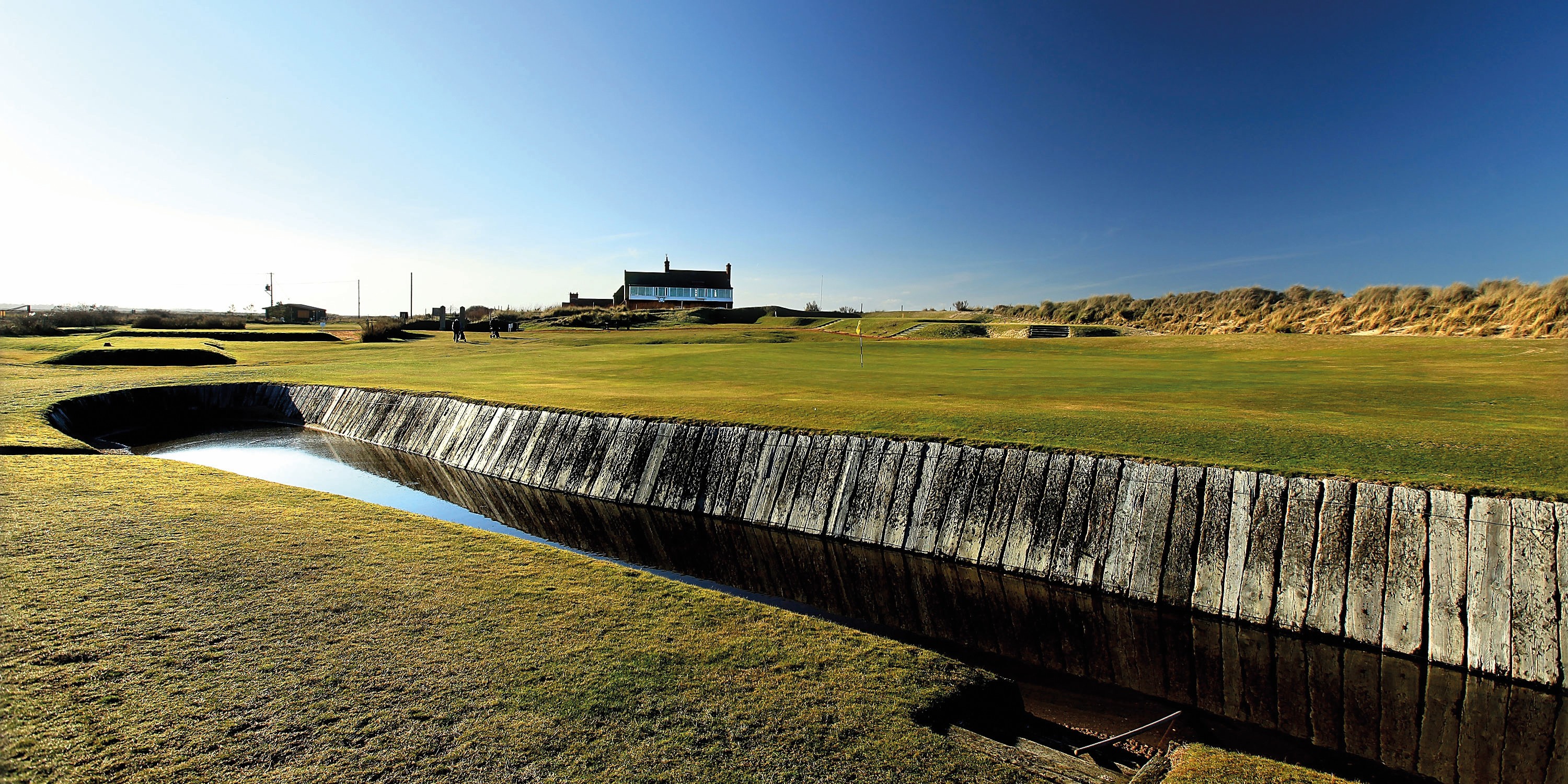
Royal West Norfolk
Royal West Norfolk | NCG Top 100s : GB & Ireland Golf Courses
Rankings
1st
9th
23rd
27th
43rd
Separated from the mainland at high tide, the course occupies a narrow strip of land between Brancaster Bay and salt marshes. From the homely and deceptively sturdy old clubhouse, you must walk across a strip of beach to find the 1st tee.
Much of the play here is foursomes, and the members consider that three hours is ample for 18 holes. The links was designed by one Holcombe Ingleby, a former mayor of Kings Lynn, and opened in 1892.
Visit Royal West Norfolk's website here.
Go back to the NCG Top 100s Homepage.
Advertisement

A Brief History of Royal West Norfolk
In 1895, the club received the "Royal" designation from the Prince of Wales, who later became King Edward VII. Since then, it has been known as the Royal West Norfolk Golf Club.
Over the years, the golf course has undergone various changes and improvements, with architects like James Braid and Herbert Fowler contributing to its design.
The course has hosted various regional and national championships, attracting golfers from all over the UK. While it may not be as well-known as some of the other top British golf courses, it is highly regarded for its natural beauty and challenging links play. Today, the course is an 18-hole links course that stretches along the scenic coastline of Norfolk and rightly places in the top UK golf courses.
Royal West Norfolk Review | NCG Top 100s: GB&I Golf Courses
Advertisement

Some of the holes are straightforward enough; others are devilishly difficult. A trio of par 4s get you on your way at Brancaster, all of which are more than 400 yards from the tips. The opening and closing holes cross over using the same section of fairway, with the 417-yard 1st moving back towards the sea. At almost 450 yards, the 2nd is the longest of the par 4s at Royal West Norfolk. There is a wide fairway, but most will be playing at least a long iron, if not a hybrid or fairway wood into this green.
Our Panellists Notes for 2025
Dan Murphy: Universally loved by our panel. Such a simple, minimalist style of golf. And yet Brancaster plays differently in every round.
Craig Morrison: The gates, the shared fairways, the turn, the masts, the magic…
David Elliott: Golf as it was 100 years ago. Fabulous, charming traditions and quirks. No course changes in 100 years and it still plays challenging today
David Walker: Up with the best for fun, idiosyncratic golf. The holes around the turn affected by the tide are often noted as the standouts, but there are many fantastic holes. Rewards strategy and imagination
Read more about our panellists here.
Advertisement

FAQs about Royal West Norfolk
Where is Royal West Norfolk located?
Royal West Norfolk is, as its name suggests, situated in the west of Norfolk. It is also on the northern tip of the county, located on the north coast and looking out towards the North Sea. It is near the village of Brancaster, and located close to Brancaster Beach, a beautiful sandy beach along the North Norfolk coast. The Scolt Head Island National Nature Reserve encompasses the course, one that has the A149 to the south of the club.
Norwich Airport is the nearest for international visitors to the region, based about an hour away to the southeast from Royal West Norfolk. London Luton, London Stansted, London Heathrow and East Midlands Airports are all within three hours from the course. There is no real train service in the north of Norfolk, with the nearest train station being located in King’s Lynn, more than 20 miles to the south of Royal West Norfolk.
Are there any other NCG Top 100s: England venues nearby?
Along with Royal West Norfolk, the coastline of the county also houses the rest of the big four when it comes to golf in Norfolk. Hunstanton is within seven miles to the west, while Sheringham and Royal Cromer are around 30 miles to the east of the venue.
What golf facilities does Royal West Norfolk offer?
On the opposite side of the road to the course lies the practice ground at Royal West Norfolk. There is a full-length driving range, along with a short game area that features a green and two practice bunkers to work from. The putting green sits next to the 1st tee.
What are the green fees at Royal West Norfolk?
The price of a green fee at Royal West Norfolk changes throughout the year, depending on the season. It is also different depending on whether it is a weekday or weekend.
For more information on current green fees at Royal West Norfolk, visit their website here.
Check out what our expects had to say about Royal West Norfolk on the NCG Golf Podcast here.
Visit Royal West Norfolk's website here.
Go back to the NCG Top 100s Homepage.
Website
http://www.rwngc.org/Phone
+44 (0) 1485 210087Address
Beach Road, Brancaster, King's Lynn PE31 8AXCourse Reviews

0.0 | 0 reviews



